Maryborough Self Drive Tour

Maryborough and the surrounding district is full of history and heritage. Discover evidence of the first inhabitants and reimagine the heady heyday of the gold rush. The richness of our goldfields still draws prospectors today. Explore our authentic villages and enjoy the natural scenic beauty of our bushland surrounds.
The Dja Dja Wurrung Aboriginal people (also known as the Djad-jawurrung or Jajowurrong tribes) called the Maryborough district Tuaggra, meaning "leaves of the Yellow Box Gum". The first white settlers to arrive were the Scottish Simson brothers, who began sheep farming in the district as early as 1840. They took up a great tract of land extending from Castlemaine to Avoca. Donald Simson built Charlotte Plains homestead north of Carisbrook on Deep Creek.
When gold was found in 1848, the population quickly grew, and by 1856 there were up to 53,000 people living in the district. Maryborough was named after Commissioner James Daly's home in Ireland.
Map of Maryborough Self Drive Tour Locations
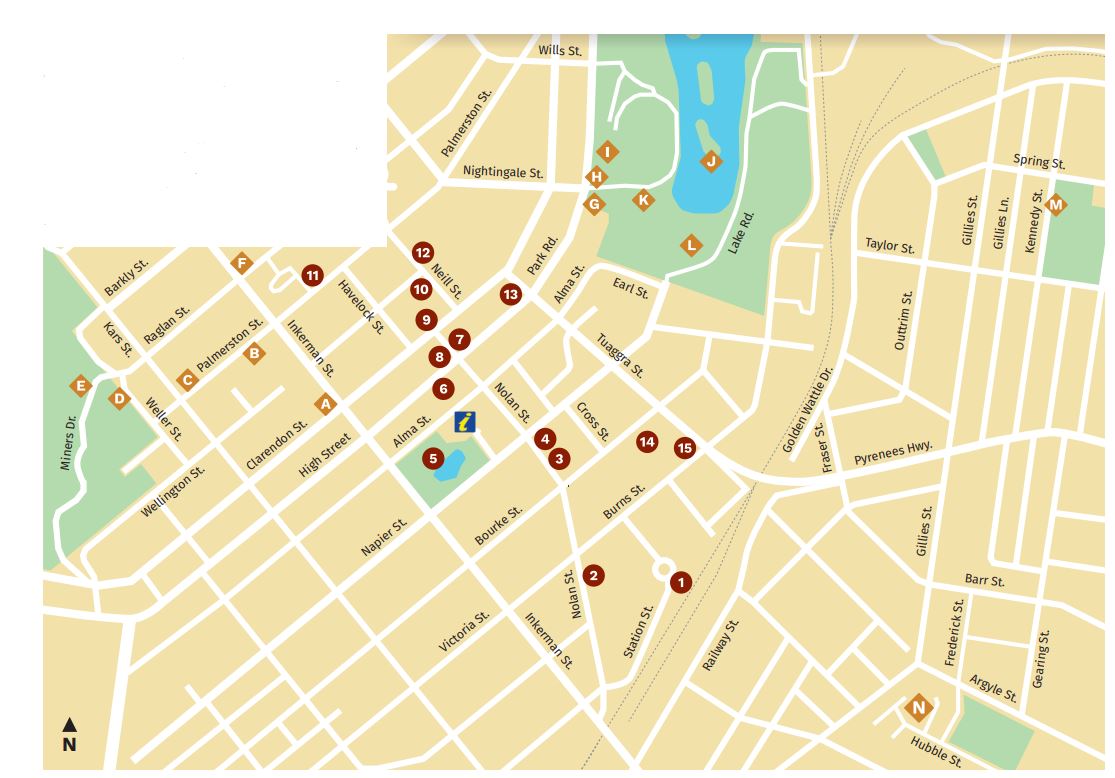
A. Wesleyan Methodist Jubilee Church
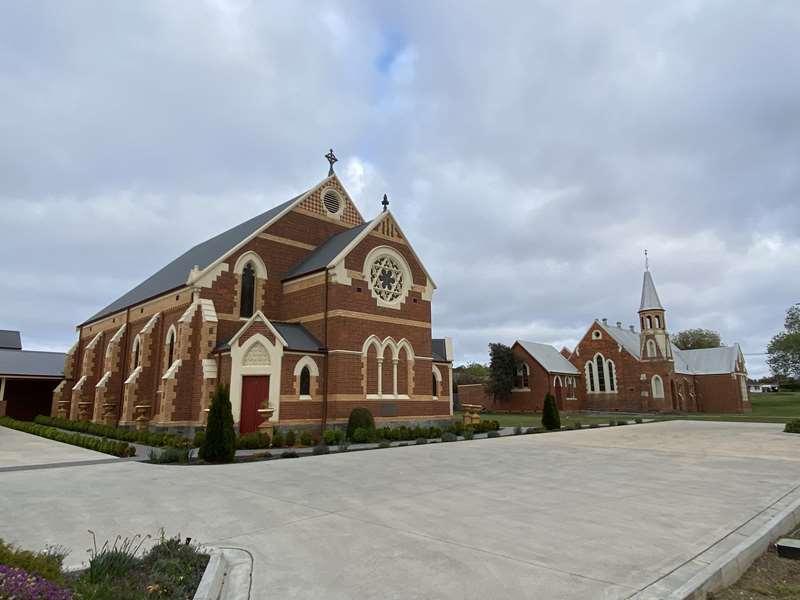
Built in 1886 by William Phelan. The foundation stone was laid by Thomas Lancaster. The Church was recently renovated to a Funeral Chapel. The Methodist Church next door is one of the oldest churches in Maryborough.
B. Former 404 Primary School building

" ALT="Maryborough Self Drive Tour">
In 1860 John Gardiner and his wife opened the "Common School of Maryborough No. 404" in a local hall. When the school became overcrowded, the Board of Advice allotted land in 1864 and a wooden structure was built for 145 pounds on the current site. The school continued to grow requiring the red brick structure to be built in 1874 and additional buildings added in 1907. Major up-grading of the school buildings occurred in 1988. "404" closed at the end of 2004 and the children moved to Maryborough Education Precinct (MEC) in Balaclava Road when all of the local state owned schools were amalgamated to one site. The building is now privately owned.
C. Worsley Museum and Cottage
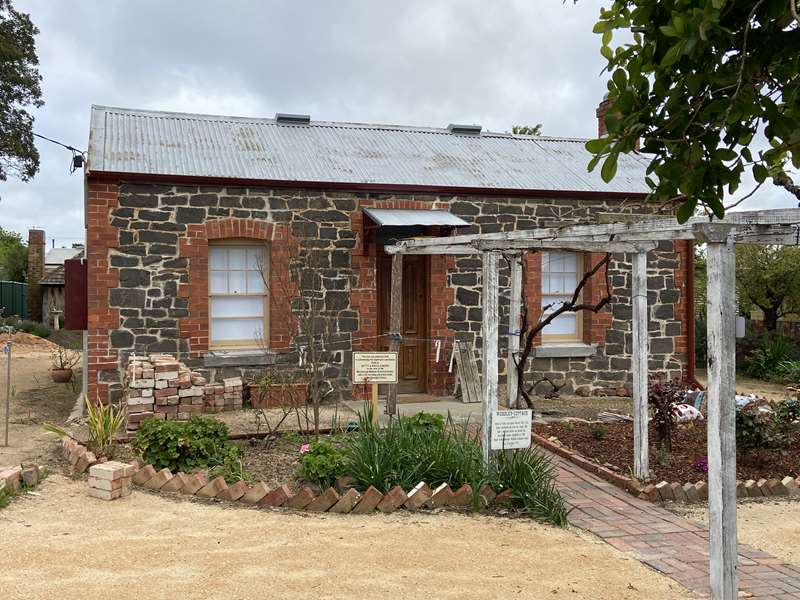
Built by Arthur Worsley (stonemason) in 1894 for his family. The bluestone and sandstone building began with 2 rooms and a detached kitchen. The two middle rooms were completed in 1908. It is the home of Maryborough Midlands Historical Society.
D. Bristol Hill Pioneer Cemetery
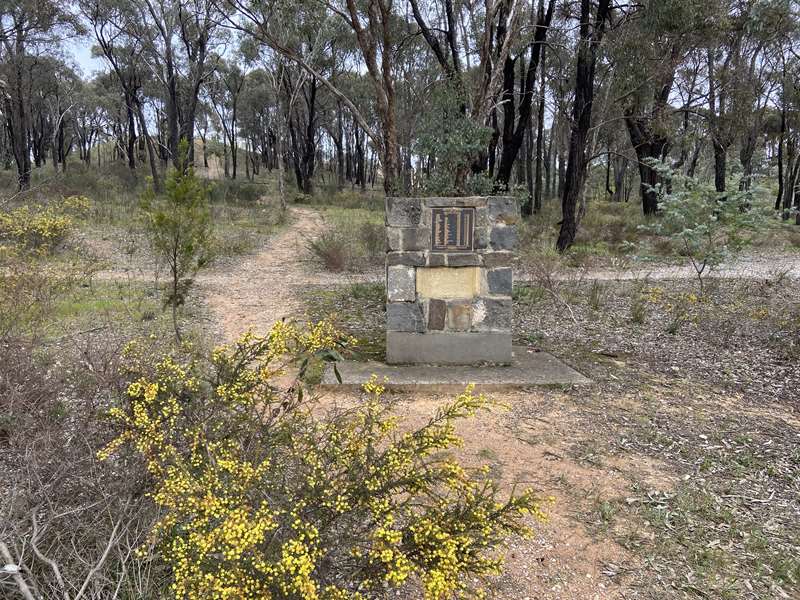
The first official cemetery for Maryborough from 1854 -1859 is located at the bottom of Bristol Hill. The wooden crosses have long since rotted away leaving the graves unmarked and the occupants unknown. There were up to 486 sites identified as possible graves, of which around 40 had been named on a plaque erected at the front of the cemetery in 2004. A recent research project has identified the names of the remaining people buried here. The cemetery is marked by a large cross of white quartz stones set into the ground.
E. Bristol Hill Tower
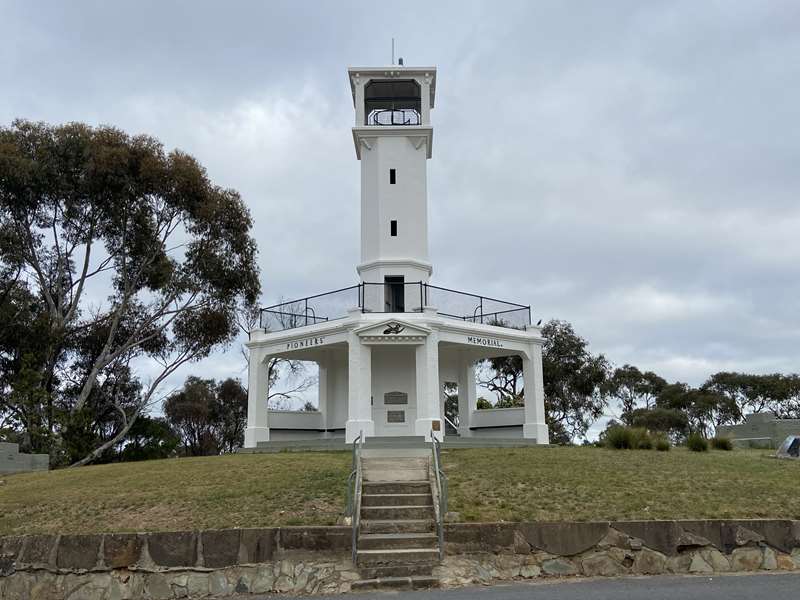
The foundation stone was laid in late 1932 and built with Unemployment Relief Committee funds in 1933. The funds secured employment for men out of work due to the Depression. The spiral staircase was built utilising bluestone from the old gaol buildings. Encrusted in the bottom wall are plaques of poems by Henry Lawson. The Tower was built to honour Maryborough's early pioneers and prospectors.
F. Old Maryborough Gaol
Originally set on 5 acres and completed in 1861 at a cost of 10,000 pounds built by Daniel Williams. The Gaol comprised of a lock up, walking yard, two guard quarters, lookout towers, underground cellars and wells, and governor's and warders' residence. The Gaol closed in 1902 but was used as a lock up until 1914. It was dismantled in 1933. Only the warders' and governor's residences can be seen today. They are privately owned.
G. Princes Park Ticket box
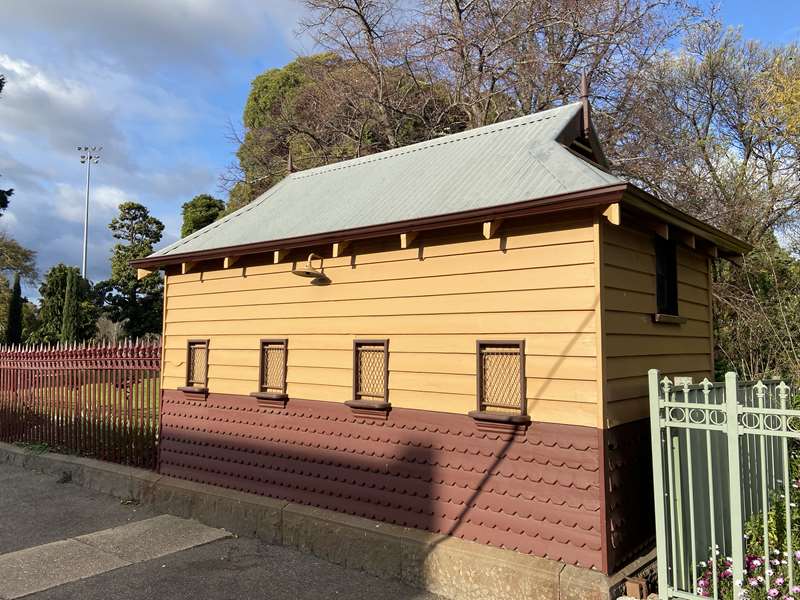
This quaint Edwardian style ticket box was built in 1908 and is the only known ticket box of its type. The unique intact building is a rare example in the Victorian context and still in operation today.
H. Memorial Gates to Princes Park
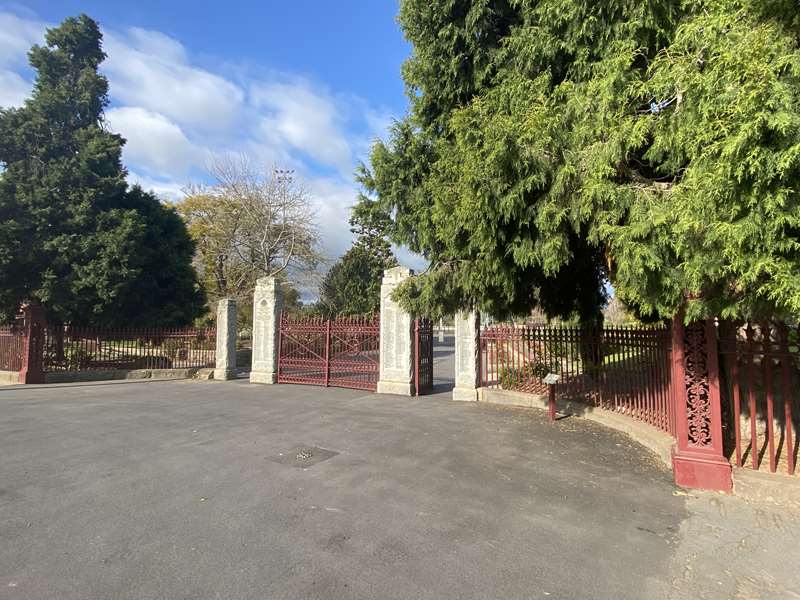
The impressive 1885 cast-iron gates and pillars of Harcourt granite (c.1926) with the names of fallen WWII soldiers are a solemn reminder of loss in a community. Lest we forget.
I. Princes Park Grandstand
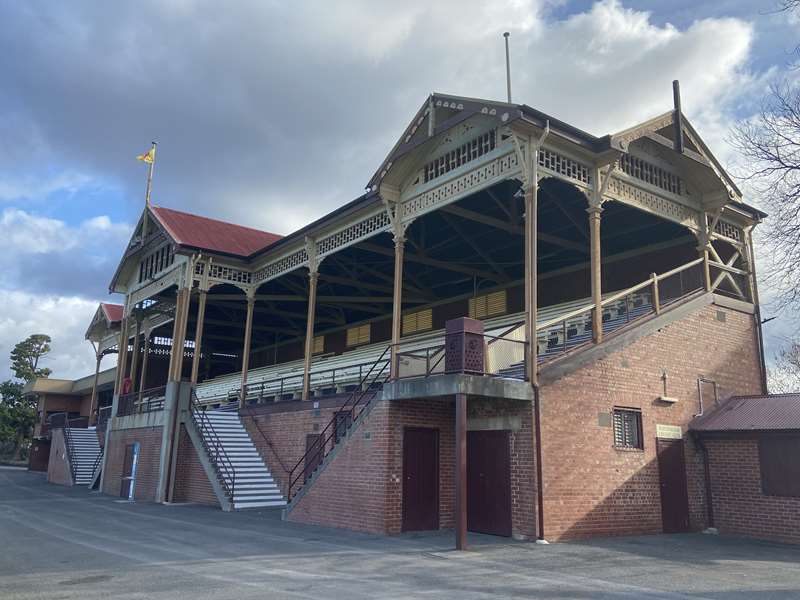
Erected in 1895, it was the first brick grandstand to be built in Country Victoria, modelled on the grandstand at Lakes Oval, South Melbourne, South Melbourne Football Club's old home ground. Built by W. J. Dingle at a cost of 1300 pounds, it continues to be a feature of our sporting history and culture in the present day.
J. Lake Victoria
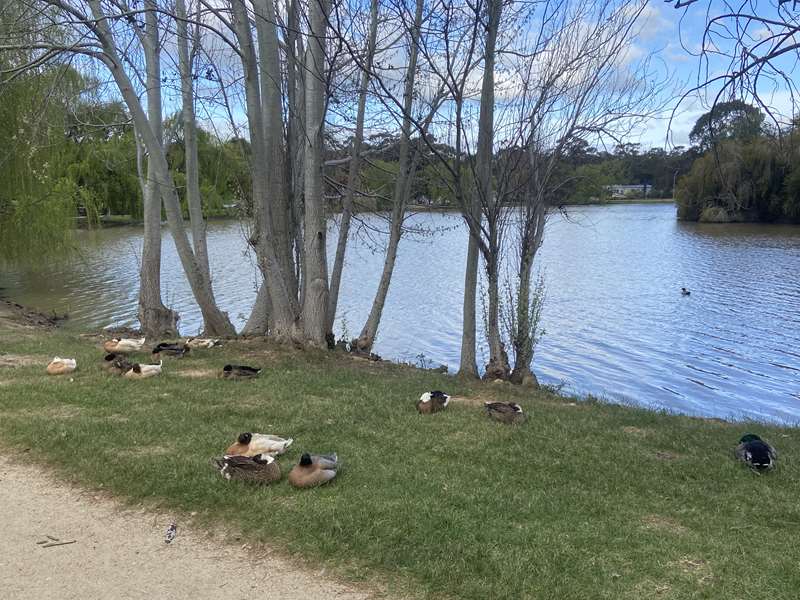
The lake was constructed by prisoners from the local gaol in honour of Queen Victoria's fifth Jubilee in 1887. Walk the willow path round Lake Victoria and pass by a playground, covered BBQ facilities, Caravan Park and camping area, sporting fields, fishing boardwalk and many species of water-loving birdlife.
K. Band Rotunda
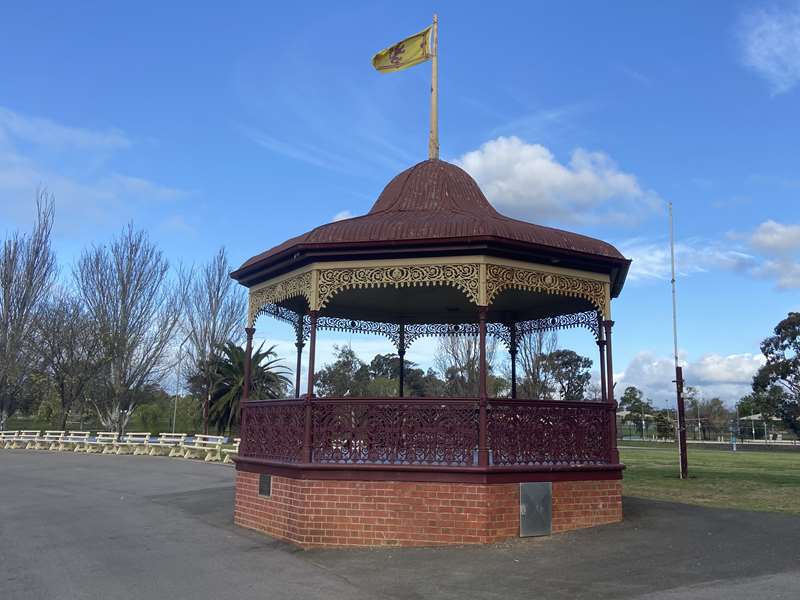
The historic rotunda was built in 1904/1905 to commemorate Maryborough's Golden Jubilee at a cost of 130 pounds. The cast iron works supplied by Robinson's Soho Foundry and the building designed by Mr H.N. Phillips, Town Clerk.
L. Olympic Swimming Pool

Opened by Sir Frank Beaurepaire in 1940 and designed by local architect EJ Peck. Remarkably intact, it features an Art Deco entrance pavilion and is on the Victorian Heritage and the National Trust Registers, being only two of a kind in Victoria.
M. Simson Memorial Cairn

Built in 1940 from bluestone blocks from the Simson homestead at Charlotte Plains, Carisbrook. The Cairn monument commemorates the Simson brothers the first white settlers of the Maryborough area back in 1840. Climb the steps for a sweeping view.
N. Primary School No. 2828
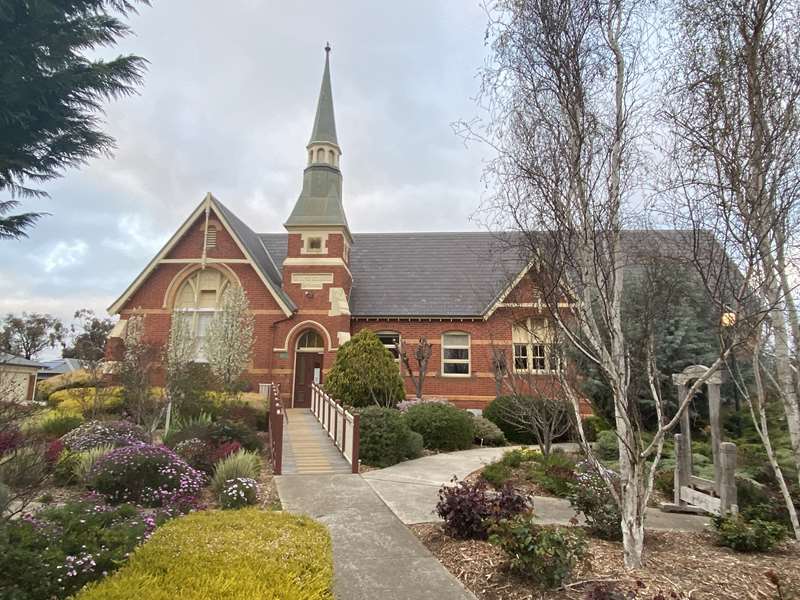
Primary School No. 2828 known locally as the "Maryborough East School" was built in 1886-87 and opened in 1887 in response to overcrowding at Maryborough Primary School No. 404. The design was based on one of the winners from the school design competition of 1873. In 1890 the top half of the was built. Overcrowding continued to be a problem and various additions were made until the school closed at the end of 2005 when all of the local state owned schools were amalgamated to one site. The original building is now the site of the Maryborough Schoolhouse Village.
Photos:
Location
63 Inkerman Street, Maryborough 3465 Map
Web Links
→ Maryborough Self Drive Tours
→ Self Drive Tour Brochure (PDF)









